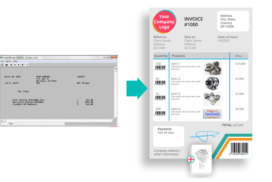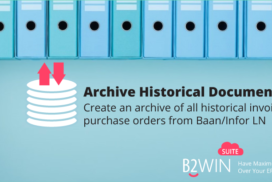Output Management System (OMS) is software that improves the creation, delivery, storage, and retrieval of outbound communications from systems like ERP, CRM, insurance, banking, billing, and other business systems. Recently, Gartner has broadened the name to Customer Communications Management (CCM) and defines it as “software as both a strategy and a market”.
Other popular names for OMS are:
- Overlay Printing
- Form Designer
- Form Printing
OMS software (CCM) is a collection of computer applications that performs the following on content from the business system:
- Design
- Compose
- Transform
- Parse
- Personalize
- Work-Flow – rule engine
- Distribute – Multi-Channel Delivery
- Storage and Retrieval
OMS is used to make business document delivery to customers, prospects, suppliers, subcontractors, and other business partners, including internal users. Delivery is made through different media including email, SMS, web pages, fax, social media sites, print, and archive.
The following is an example of the use of Output Management Systems:
Your ERP system produces a canned purchase order. Changing the purchase order in the ERP system requires expensive source code programming. To bypass this, you can use an OMS system that will perform the following:
Setting up the system.
- Design – A user-friendly graphical design tool will help you change the layout of the purchase order.
- Compose – Define key rules for pulling out variables and metadata like supplier contact information (email address). Compose the personalized email message that will accompany it, which may include the purchase order number, supplier name and number and delivery date. Other rules need to be defined for the system to work.
Once the design and composition rules are in place, the system will perform the following after the purchase order is sent from the ERP system to the OMS system:
- Transform – make a transformation of the raw output into a user-friendly PDF file based on the design; will add logo and footer, signature, and all other needed design elements.
- Parse – finding key data from the purchase order raw data like the supplier’s email address. In case a batch of purchase orders is run, the system will parse the whole output and produce single purchase orders.
- Personalize – Each purchase order will be accompanied by a personalized message that will include values like the purchase order number, supplier name and number, delivery dates, and language (for your suppliers from other countries).
- Workflow – A certain workflow is applied. For purchase orders above a certain amount, they are routed for the manager’s approval before it is sent. Other orders can be sent out without delay.
- Distribute – The sending of purchase orders is automated. Some suppliers may require an email, while others still use fax. Some suppliers may also need to have a hard copy, so printing needs support, too. Making a copy in the archive can also be of benefit for future document management.
- Storage and Retrieval – The system needs to be able to store and retrieve these communications for documentation of the process, tracking, and troubleshooting.
B2Win Suite is NAZDAQ’s most innovative product. The company has been providing output management systems for ERP customers, with experience of over 20 years.




